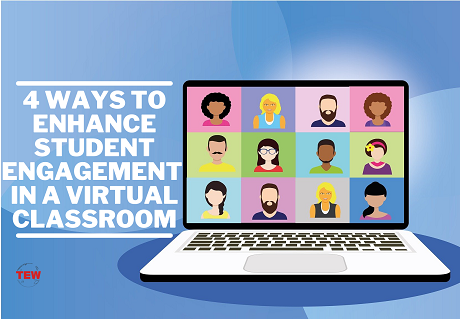The pandemic rushed everyone indoors and educational institutions were left with no other choice but to provide learning through digital solutions. This was the only solution to ensure students stay safe yet keep progressing academically. This led to the mass adoption of tools that support Virtual Classroom instructor-led learning. With the help of tools like an LMS, or learning management system, you can easily create a classroom-like setup virtually to ensure students keep learning. Moreover, the WordPress LMS plugin you choose allows you to share courses, manage the course content, grade quizzes solved by students, etc. Apart from creating Virtual Classroom, enhancing student engagement in virtual classrooms is important.
But virtual learning is not as exciting as it may seem. Students feel lonely and isolated as they do not have a way to be physically around their friends and classmates like in the traditional classroom. This reduces their engagement levels and leads to a decline in the amount of information they retain through a virtual classroom session.
If you follow the following tips, you can successfully enhance student engagement in a virtual classroom:
1. Use the microlearning approach
One of the best ways to ensure students are involved in an online class and not getting bored is to keep the lectures short. This is called the micro-learning approach which involves breaking down complex modules in short bursts.
Taking breaks after every short module keeping in mind students’ attention span can do wonders. These breaks don’t have to be very long; they can just be a 5-minute break to allow students to talk among themselves. This allows students to relax and feel refreshed before the next topic starts.
2. Breed healthy competition
A lot of students hate studying virtually because of the lack of social engagement. You need to create active participation to help students feel connected with each other. Give them a group activity with a reward as the end result to get them excited.
This leads to healthy competition between students and gives them a chance to collaborate with fellow students. You can keep the activity focused on their learning topics. This will get them to learn new things and at the same time, create a strong feeling of community.
3. Interact with students in regular intervals:
A major reason for students feeling disengaged in a virtual classroom session is because it is too one-sided. Teachers are speaking most of the time and there is not much conversation happening between them and the students.
To ensure students are active and interested, talk to them often and keep them involved. Keep asking them questions and leave space for them to share their queries. Talking directly to a student helps in engaging them and makes them feel lively.
4. Share self-paced learning material beforehand:
You do not have to teach everything through a virtual live session. Some parts of the e-learning objectives can be covered through pre-recorded online material. These could be videos, animation, or text-based learning material that the students can consume at their own pace.
The key is to share them beforehand and hold discussions on them during the virtual classroom so students know they will have to actively participate in it. It also gives them the space to seek clarity on topics they were unable to understand. Make sure they are aware of when the discussion will be held so they come prepared.
Conclusion:As a teacher conducting online classes, your objective should be to help students learn in a way that’s fun and not something that becomes a snoozefest. Keep students involved in discussions to ensure they are alert and understanding what they are learning. Let us know in the comments which of these tips helped you successfully engage students in your online class.





